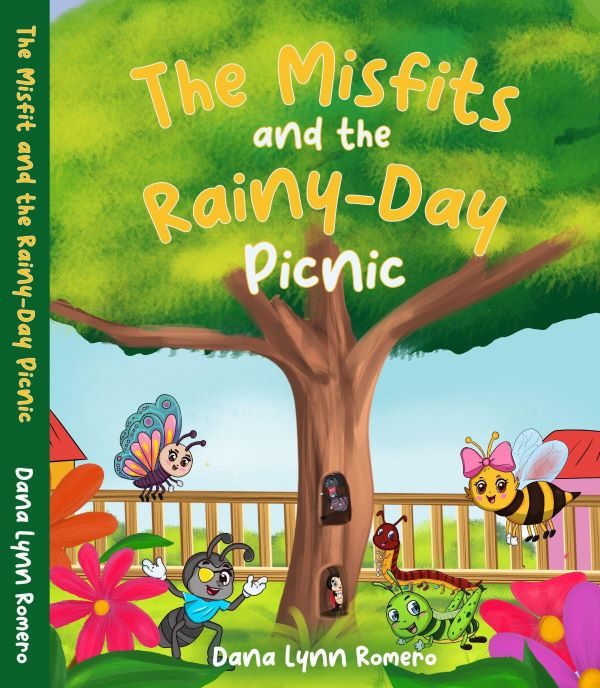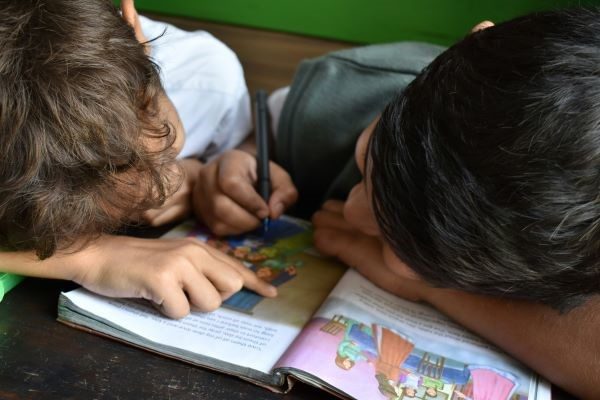As parents and teachers, we want to nurture curiosity and creativity in our kids’ lives. One of the most powerful ways to do this is through immersive storytelling. By transporting young minds to magical worlds where they can experience adventures alongside vivid characters, impactful narratives lay the foundation for imagination and learning. But why is immersive storytelling so impactful? And how can we incorporate it into our reading with young children? Let’s explore this in this blog post.
The Impact of Immersive Storytelling
Immersive storytelling provides countless benefits that cultivate lifelong learning and well-being. Through imaginative experiences with narratives, children build crucial skills.
Cognitive Development
- Imagining story details such as sensory descriptions, characters’ thoughts, and emotions helps develop executive functioning skills like focused attention, working memory, cognitive flexibility, and organization.
- Having to use clues and context to understand plots, solve problems, or predict outcomes that arise in stories promotes logical reasoning abilities as well as linear thinking to comprehend sequences of events and their connections.
- Retelling stories in their own words or discussing what happened in a chapter allows children to demonstrate their understanding of cause-and-effect relationships and test their recall, both of which support literacy and academic skills.
Social-Emotional Skills
- Relating to various characters by putting themselves in those characters’ shoes improves empathy, compassion, and perspective-taking abilities as children learn to understand different points of view.
- Following the arcs of narrative structure, such as the rising action, conflict, and resolution of plots, helps children recognize and manage their own emotions and build self-regulation.
- Engaging with stories in a group setting where they have to listen attentively to the reader and then participate in a discussion encourages skills like communicating clearly, active listening, collaboration, and conflict resolution through compromise.
Creativity & Innovation
- Portraying characters, scenes, or aspects of a story through visual arts, drama, dance, etc., cultivates self-expression and thinking outside the box.
- Finding new ways to adapt or add to a story shows divergent thinking and an active imagination.
- Making connections between fictional events and real-world analogues expands abstract thought and shows early problem-solving skills.
Mental Wellness
- The engagement and joy of escaping into an immersive narrative lowers stress hormones like cortisol that could otherwise hinder development.
- Forming social-emotional bonds over sharing stories is comforting and promotes secure attachments, essential for well-being.
- Having opportunities to express individuality and agency through narrative skills nurtures confidence and a positive self-concept.
As they grow, these skills support success in school, career, and relationships. Individuals who read prolifically as children often maintain that joy of learning into adulthood as well. Immersive storytelling provides entertaining edutainment that nourishes the whole child.

Immersive storytelling cultivates lifelong learning and well-being
13 Tips for Incorporating Immersive Storytelling into Children’s Activities
Here are some tips for incorporating immersive storytelling into activities with children:
1. Describe the Setting and Characters in Vivid Detail
Go into rich sensory details when describing the setting and characters. Encourage children to really picture how something might smell, feel, sound, taste, or look based on the descriptions. Ask questions to check their understanding and imagination. The more senses you engage, the more immersed they’ll feel.
2. Encourage Imagining Perspectives
Have children physically positioned themselves as the character – how might their posture, facial expression, or movements change based on how that character is feeling in the story? Ask what they might say or think in that situation to bring the character’s perspective to life.
3. Model Enthusiasm as You Read Aloud
Really get into different voices, pitch, volume, and expressiveness to portray each character. Use dramatic pauses for suspense. Convey your own excitement and curiosity to inspire those feelings in the listeners. Make eye contact and facial expressions to engage them.
4. Leave Room for Discussion and Questions
Allow plenty of time for back-and-forth discussion. Ask open-ended questions and encourage varied responses. Refer back to specific parts of the story to sustain engagement. Build on each other’s ideas and perspectives.
5. Consider Props, Costumes, or Role-Playing
Set up an environment similar to the story setting to spark imagination. Rotate props and costumes for different scenarios. Encourage role-playing to strengthen character connections.
6. Incorporate Movement and Actions
Physically act out parts of the story together. Have children mimic the character’s pose, facial expression, and movements. For older children, try reenacting full scenes. Kinesthetic learning makes the story world come alive.
7. Use Repetition Strategically
Reiterate memorable phrases, descriptions, or plot points. This could involve call-and-response reading where you prompt repetition. Singing or chanting text also engages auditory recall. Repetition deepens understanding and enjoyment.
8. Incorporate Sound Effects
Model various sounds and have children attempt their own interpretations. Record readings with added sound effects for playback. Describe connections between sounds and actions/emotions. Sounds cultivate rich sensory context.
9. Draw or Map Out Story Elements
Sketching scenes allows children to problem-solve visual portrayals. Map characters’ journeys or the sequence of events to demonstrate comprehension. Illustrations concretize abstract ideas.
10. Retell the Story Freely
Ask open-ended prompts rather than yes/no questions to check conceptual understanding. Have children retell to stuffed animals or each other. Freer forms of storytelling exhibit creative thinking.
11. Recommend Follow-Up Activities
Inspire further exploration, inquiry, crafts, outdoor play, or performances. Longer story immersion fosters knowledge application and learning beyond the text. Hands-on extensions cement enduring insights.
12. Provide Diverse Story Options
Representing diverse characters, cultures, and experiences cultivates acceptance and understanding. Diverse narratives inspire limitless perspectives and build empathy.
13. Make It Fun!
If children remain engaged and excited throughout the process, immersive learning will stick. Laughter and joy are the best teachers.

Dana Lynn makes storytelling immersive through imaginative characters and garden setting in her latest book
Order Your Copy of “The Misfits and the Rainy-Day Picnic” Today!
Nurturing imagination through vivid narratives lays the groundwork for development in key learning areas. It also builds a lifelong love of reading when stories come alive in this personal way.
“The Misfits and the Rainy-Day Picnic” by Dana Lynn Romero makes storytelling immersive through its imaginative bug characters and detailed garden setting. Readers gain insights into these funny protagonists as they join Benjamin Ant and his friends on their adventure. The wonders of nature are brought to light through a bug’s-eye perspective.
Order your copy of “The Misfits and the Rainy-Day Picnic” today to introduce immersive storytelling to the children in your life.



0 Comments